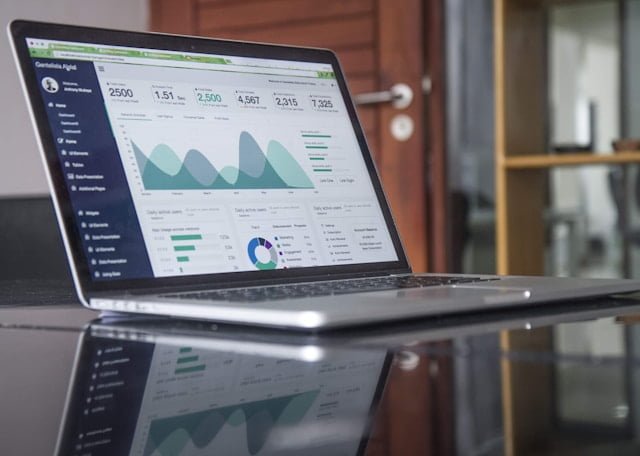
In today’s digital landscape, having a website is just the beginning. To truly succeed, you need to understand how your website is performing and where improvements can be made. Website analytics offer invaluable insights into user behavior, traffic sources, and overall site effectiveness. This guide will walk you through how to leverage analytics to enhance your website’s performance, drive more traffic, and achieve your business goals.
Website analytics are tools and techniques used to collect, measure, and analyze data related to website performance. They provide insights into how visitors interact with your site, which pages are most popular, and how effectively your site is meeting its goals.
Analytics are crucial for making data-driven decisions that enhance website performance. They help identify strengths and weaknesses, measure the effectiveness of marketing campaigns, and understand user behavior to optimize the site for better results.
Traffic sources indicate where your visitors are coming from, whether it’s search engines, social media, referral sites, or direct traffic. Understanding traffic sources helps you evaluate the effectiveness of your marketing efforts.
Bounce rate measures the percentage of visitors who leave your site after viewing only one page. A high bounce rate can indicate issues with user experience or content relevance.
Average session duration shows how long visitors stay on your site. Longer sessions typically indicate higher engagement and interest in your content.
Conversion rate tracks the percentage of visitors who complete a desired action, such as making a purchase or filling out a form. Improving conversion rates can significantly impact your site’s effectiveness and ROI.
User behavior flow shows the path users take through your site, including which pages they visit and in what order. Analyzing this flow helps identify potential navigation issues and opportunities for improving the user journey.
Google Analytics is a powerful tool that provides comprehensive insights into website traffic, user behavior, and conversion metrics. It offers various features for tracking and analyzing data.

SEMrush provides detailed SEO analysis, including keyword performance, traffic trends, and competitive insights. It’s useful for optimizing search engine visibility and understanding market positioning.

Ahrefs is another popular tool for SEO and website analysis. It offers insights into backlinks, keyword rankings, and site health, helping you improve your SEO strategy.

Hotjar provides heatmaps, session recordings, and user feedback tools that help visualize user interactions and identify areas for improvement in user experience.
Crazy Egg offers heatmaps, scrollmaps, and other visual tools to understand how users interact with your site. It helps identify popular areas and areas needing improvement.
Before diving into data, define what you want to achieve. Goals could include increasing traffic, improving user engagement, or boosting conversions. Clear goals will guide your analysis and help you measure success.
Focus on the metrics that align with your goals. For example, if your goal is to improve conversions, track conversion rates and user behavior flow. Avoid getting overwhelmed by too many metrics.
Look for patterns and trends in the data to understand user behavior and site performance. For example, identify which pages have high bounce rates or which traffic sources are most effective.
Step 4: Compare with Benchmarks
Compare your data with industry benchmarks to assess how your site performs relative to competitors. Benchmarks provide context and help set realistic performance goals.
Leverage the insights gained from your analysis to make data-driven decisions. Implement changes based on what the data reveals to continuously improve your website’s performance.
Using inaccurate or incomplete data can lead to misguided decisions. Ensure your data collection methods are accurate and reliable to avoid errors in analysis.
With the rise in mobile traffic, it’s essential to track and analyze mobile performance separately. Ignoring mobile analytics can result in missed opportunities to optimize the mobile user experience.
Improperly set up goals can skew your analytics results. Ensure your goals are accurately configured in your analytics tools to track performance effectively.
Vanity metrics, such as page views or social media likes, may look impressive but don’t always reflect meaningful engagement or business impact. Focus on metrics that align with your goals.
User feedback provides qualitative insights that complement quantitative data. Neglecting feedback can result in overlooking critical areas for improvement.
Use insights from analytics to improve user experience. Address issues such as high bounce rates or low session durations by optimizing site navigation, speed, and content relevance.
Based on traffic sources and user behavior, refine your SEO strategy. Optimize on-page elements, improve keyword targeting, and address technical SEO issues.
Analyze which content performs best and refine your content strategy accordingly. Create more of what resonates with your audience and address gaps in content.
Enhance website navigation and design based on user behavior data. Ensure that users can easily find what they’re looking for and that the site is visually appealing.
Use A/B testing to experiment with different versions of pages or elements. Analyze the results to determine which variations perform better and implement the most effective changes.
Leveraging website analytics is crucial for understanding and improving your website’s performance. By tracking key metrics, using the right tools, and analyzing data effectively, you can make informed decisions that enhance user experience, boost engagement, and achieve your business goals. Regularly review and refine your strategies based on analytics to ensure continuous improvement and success.
By following these guidelines and incorporating the suggested search phrases for images, you can create a comprehensive and SEO-friendly blog post that provides valuable insights into using analytics to improve your website’s performance.
WhatsApp us